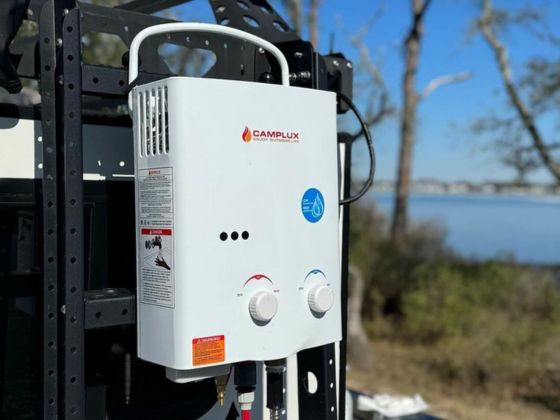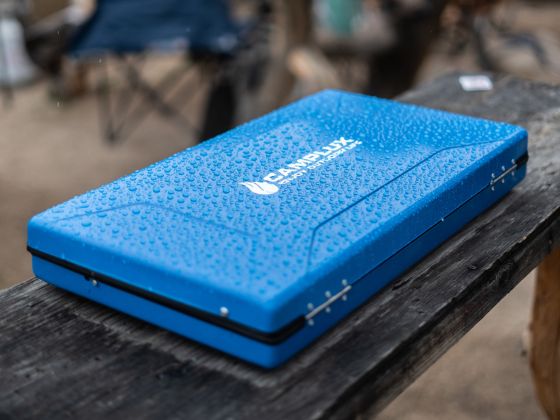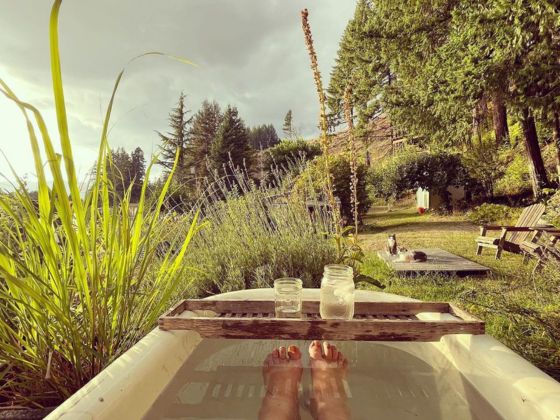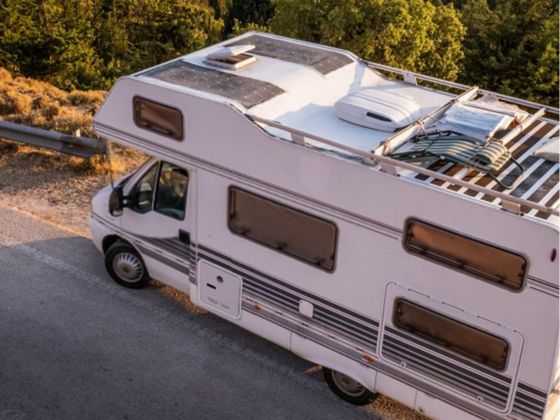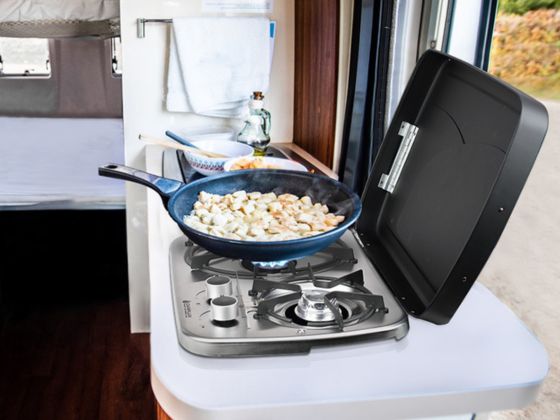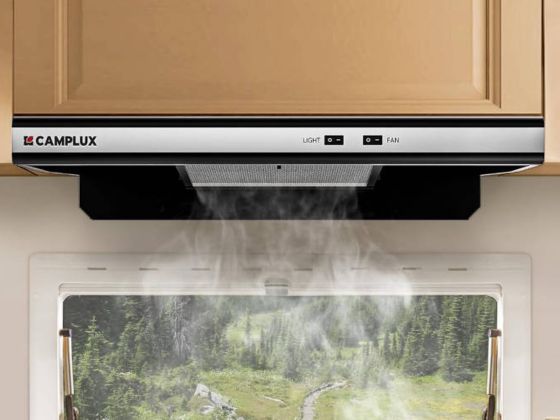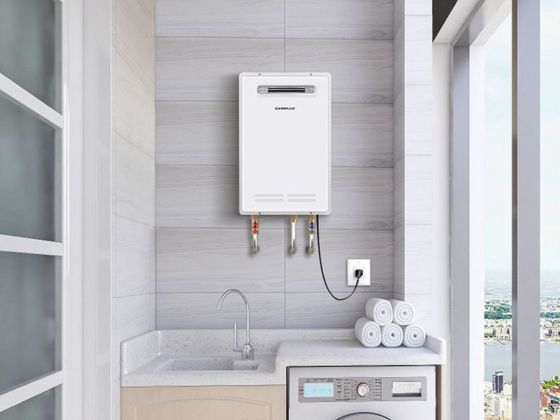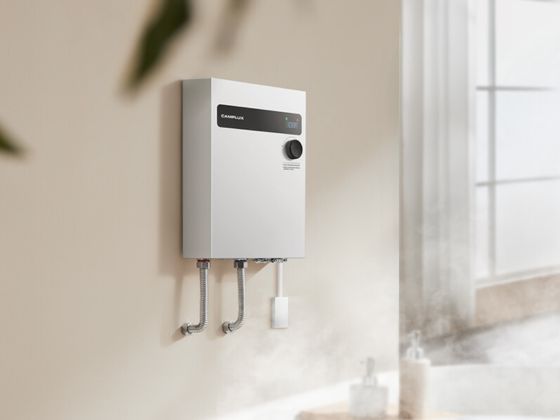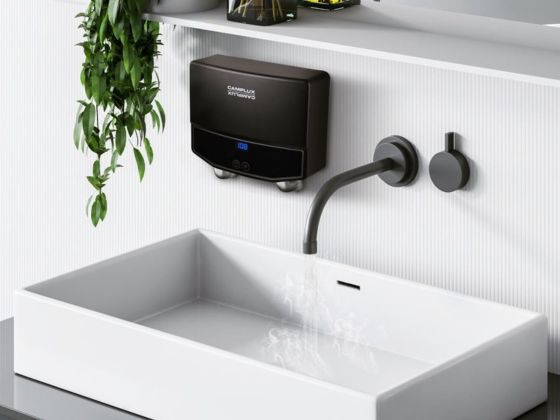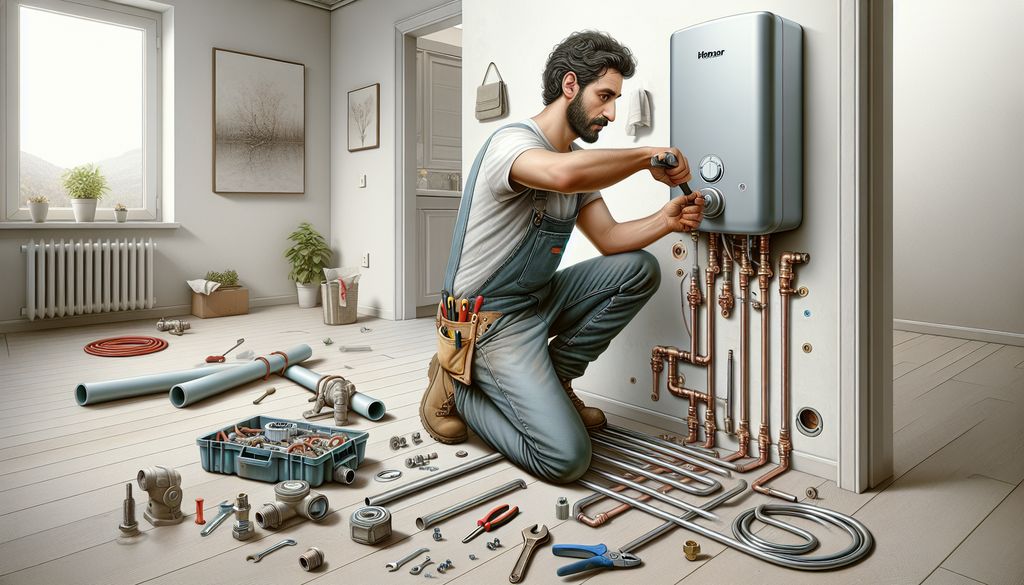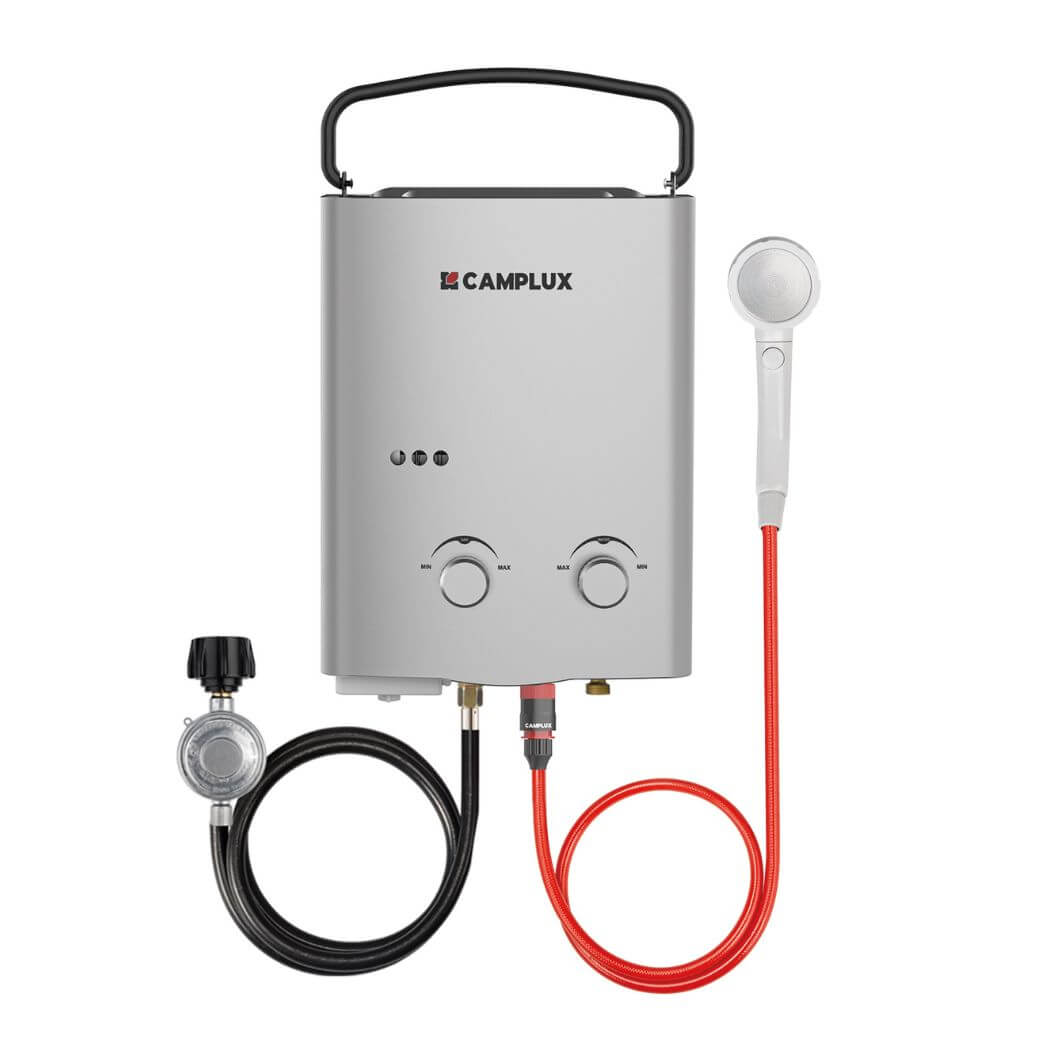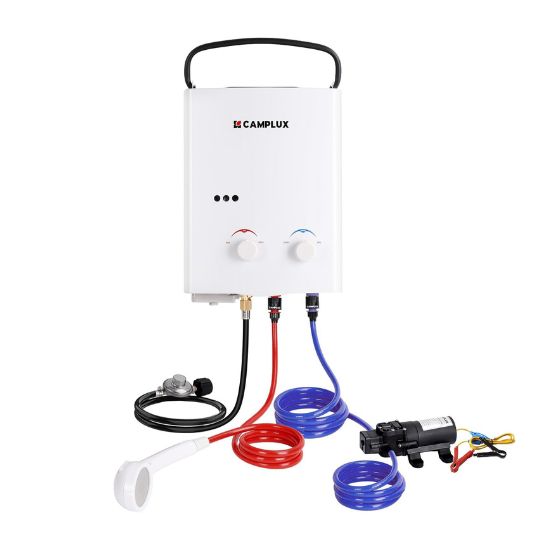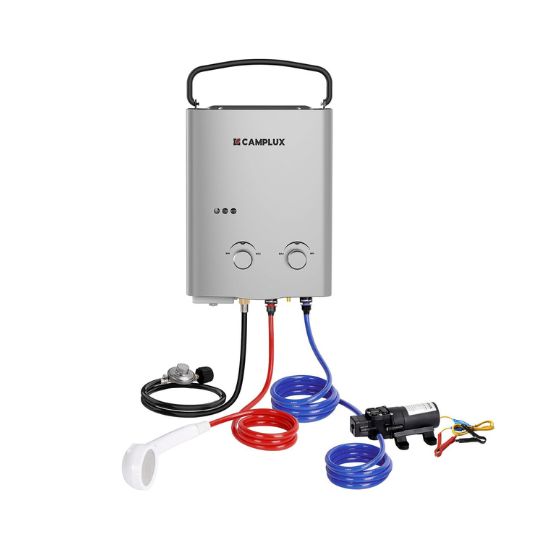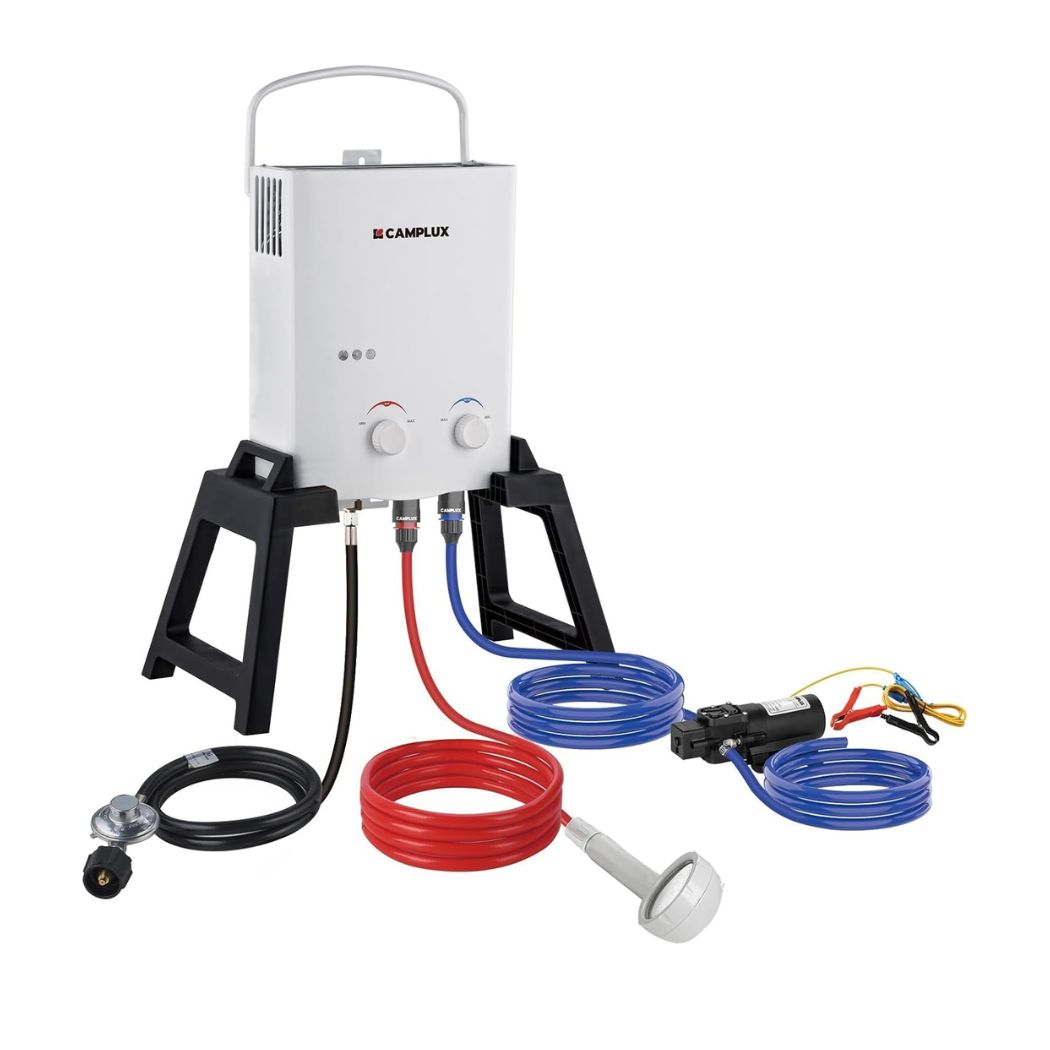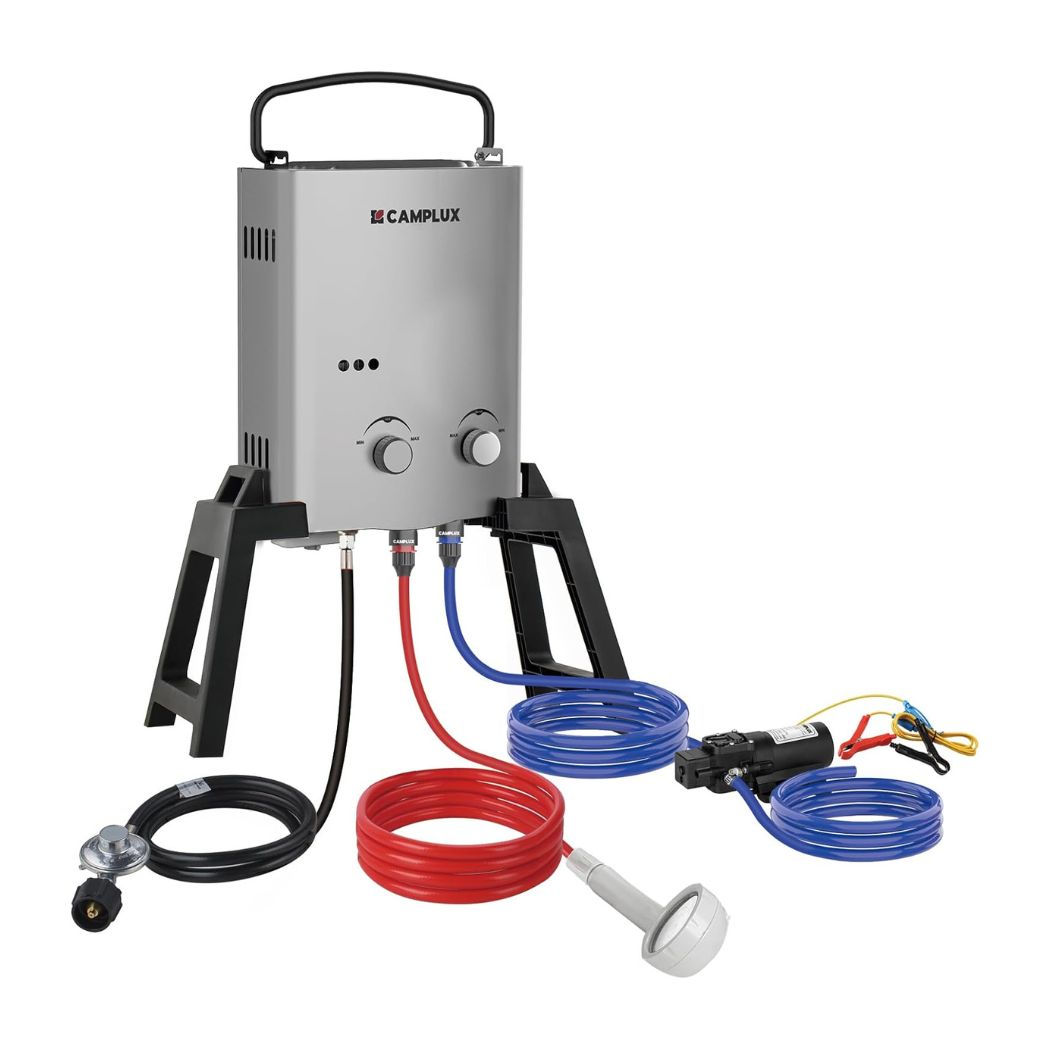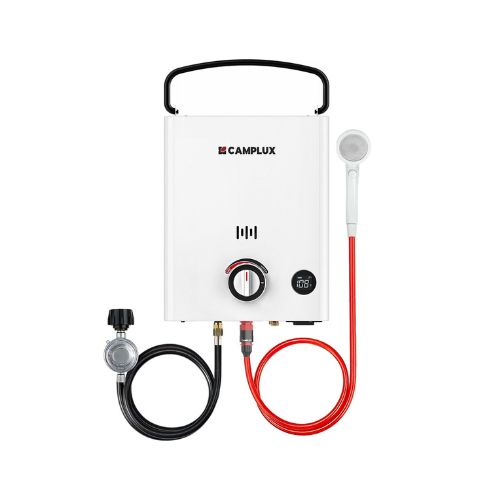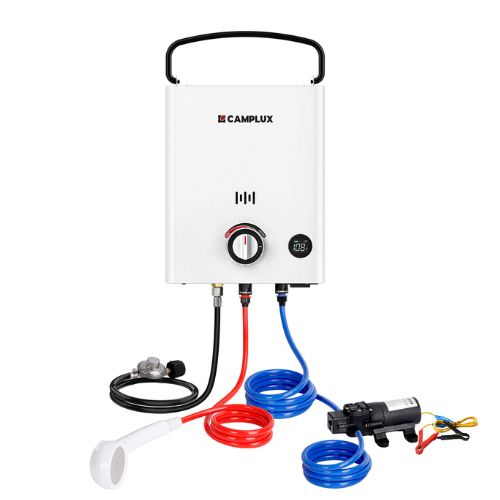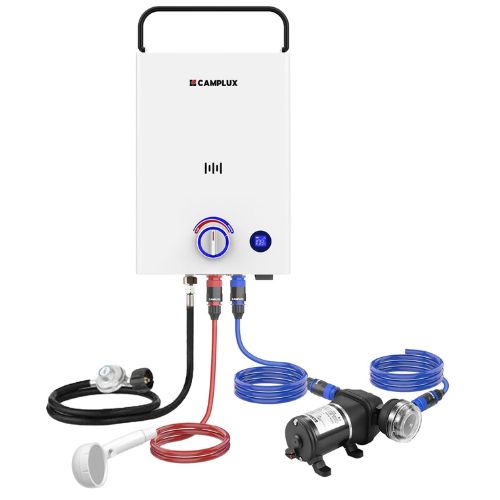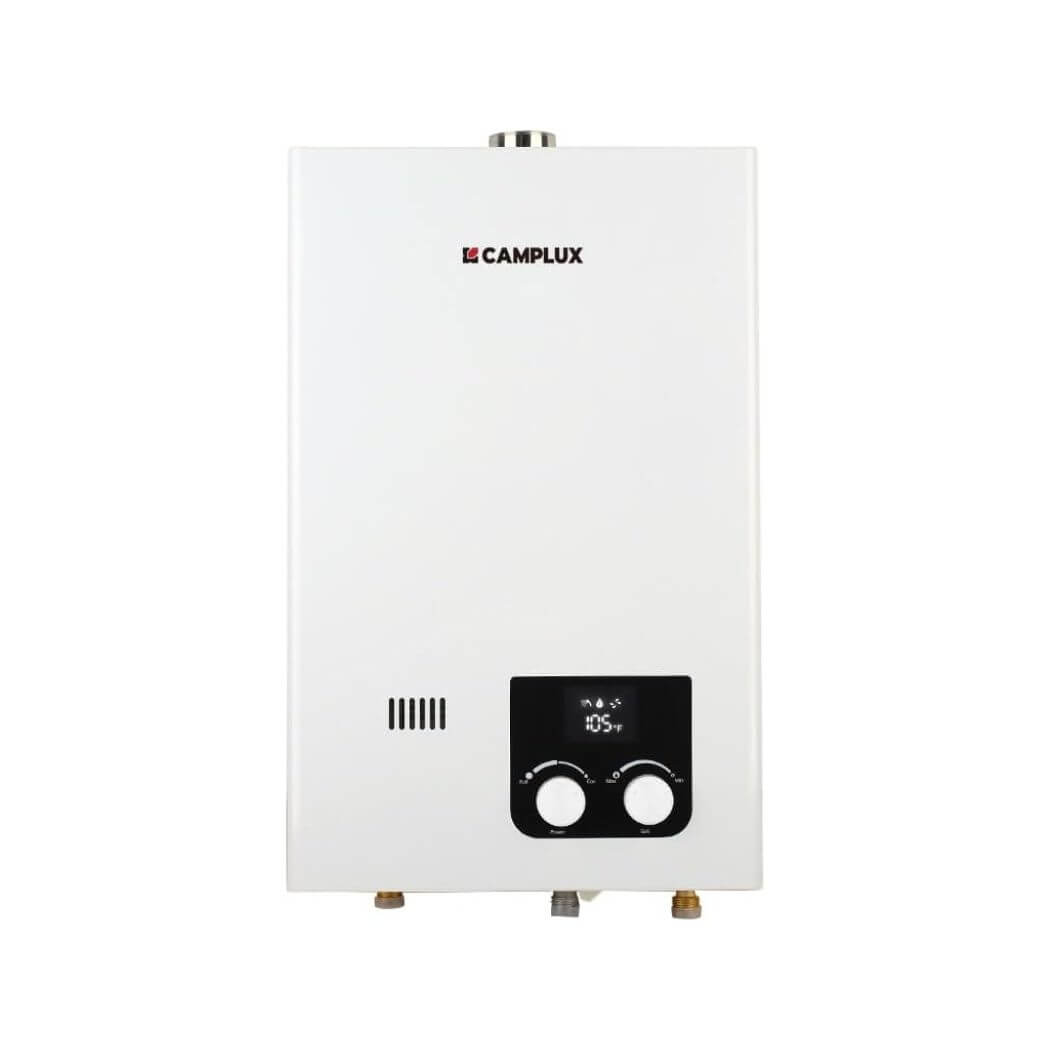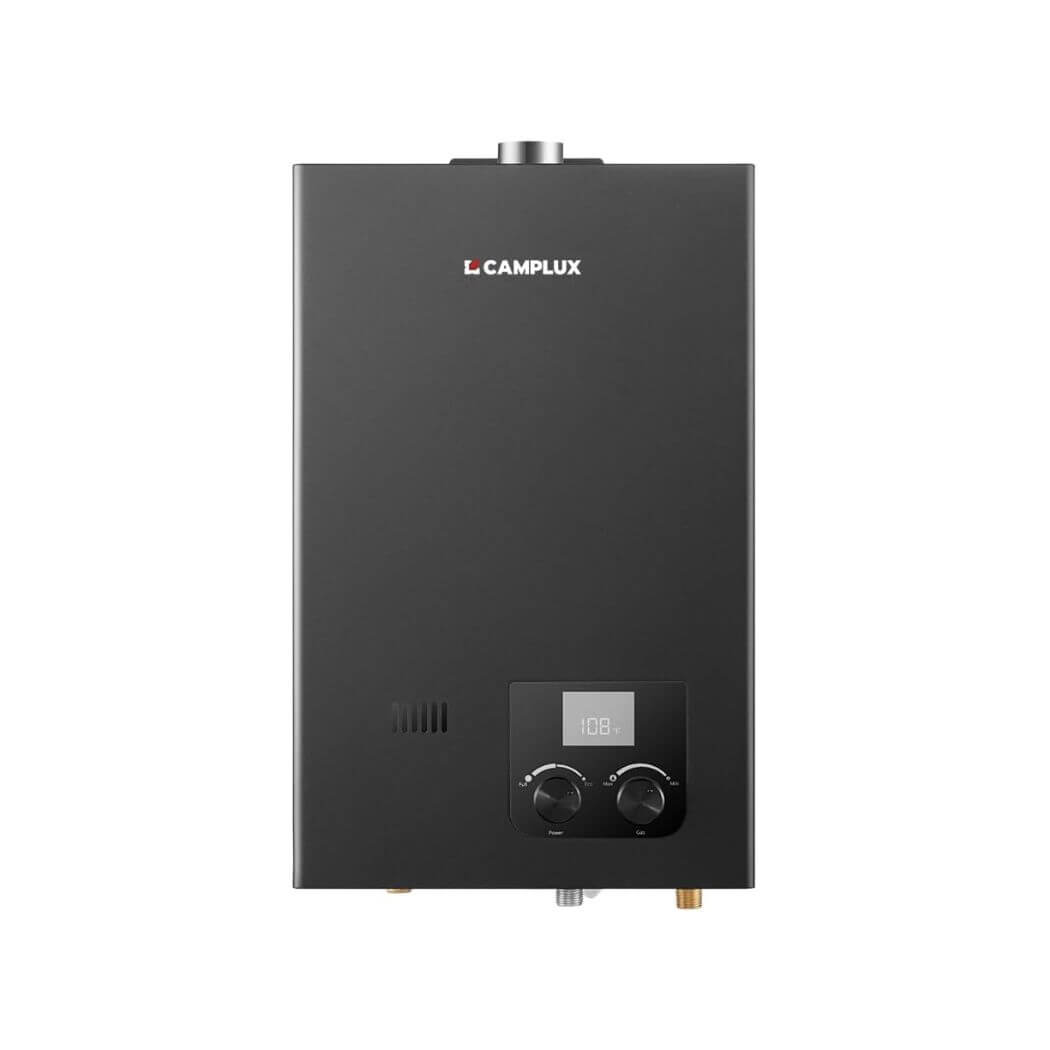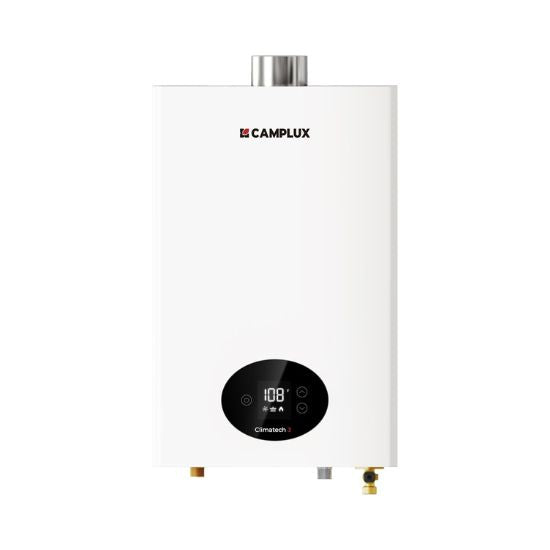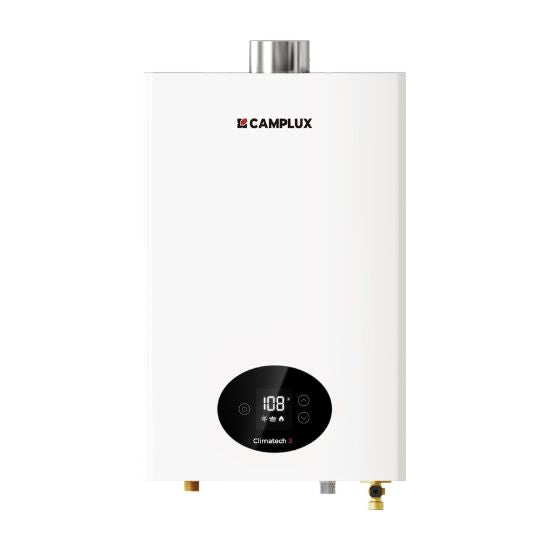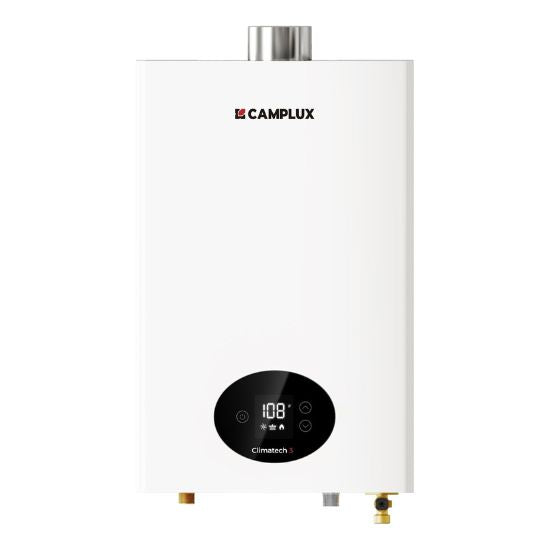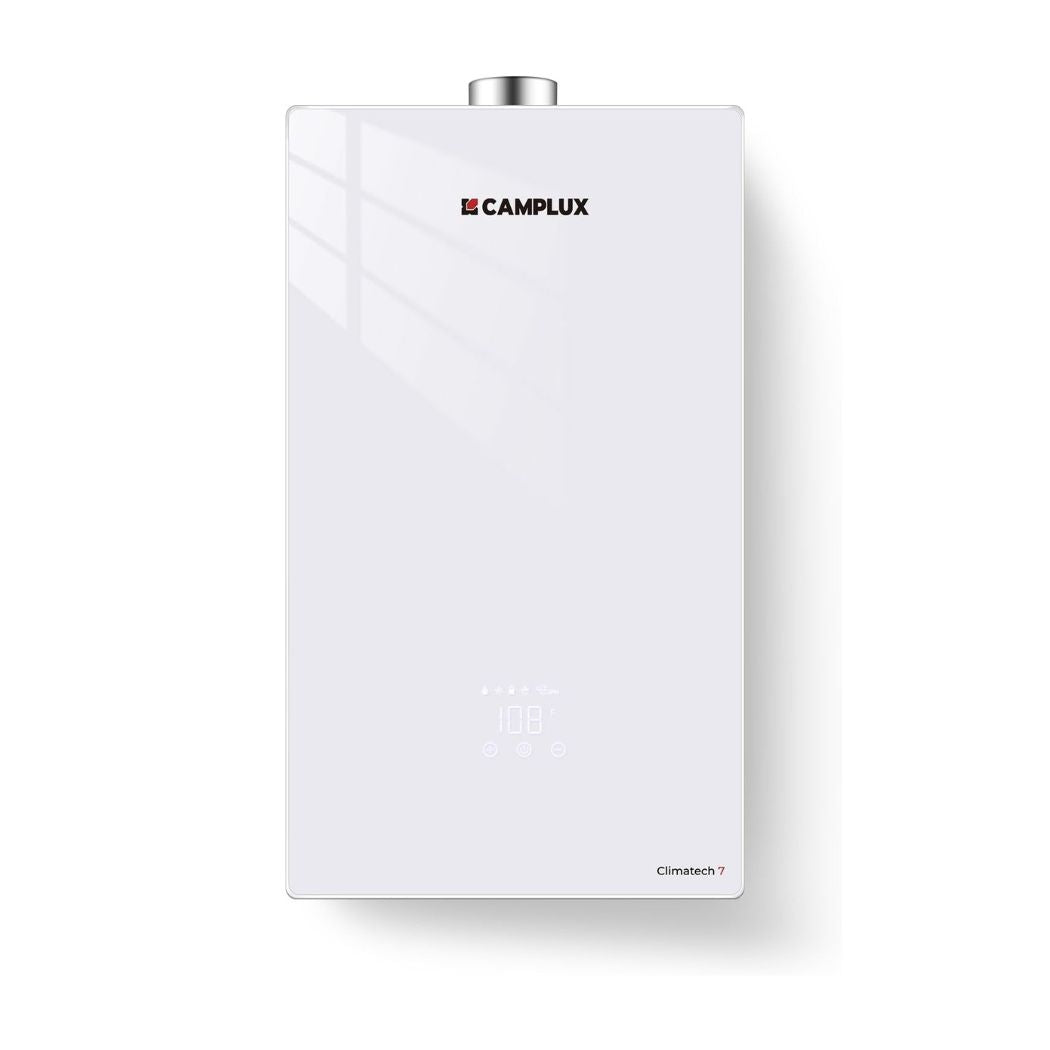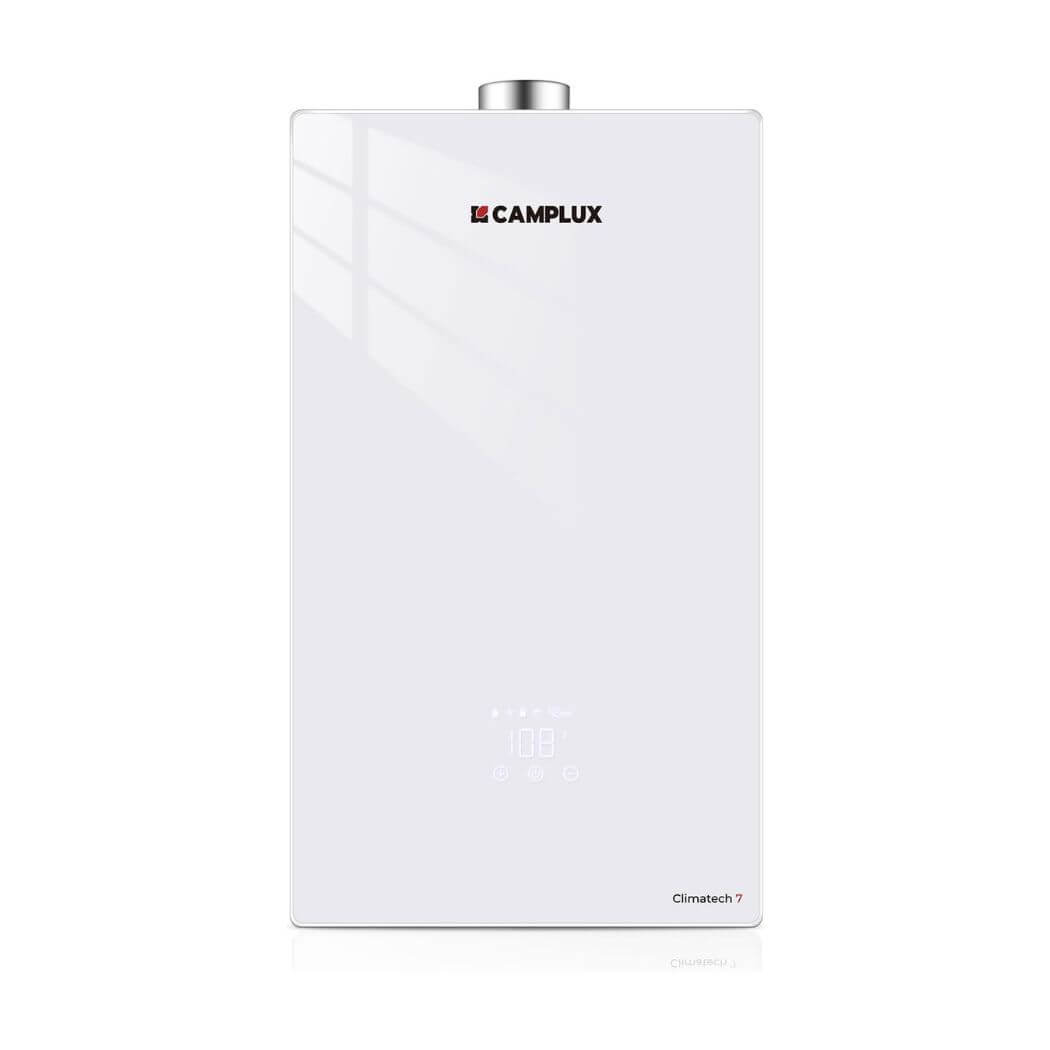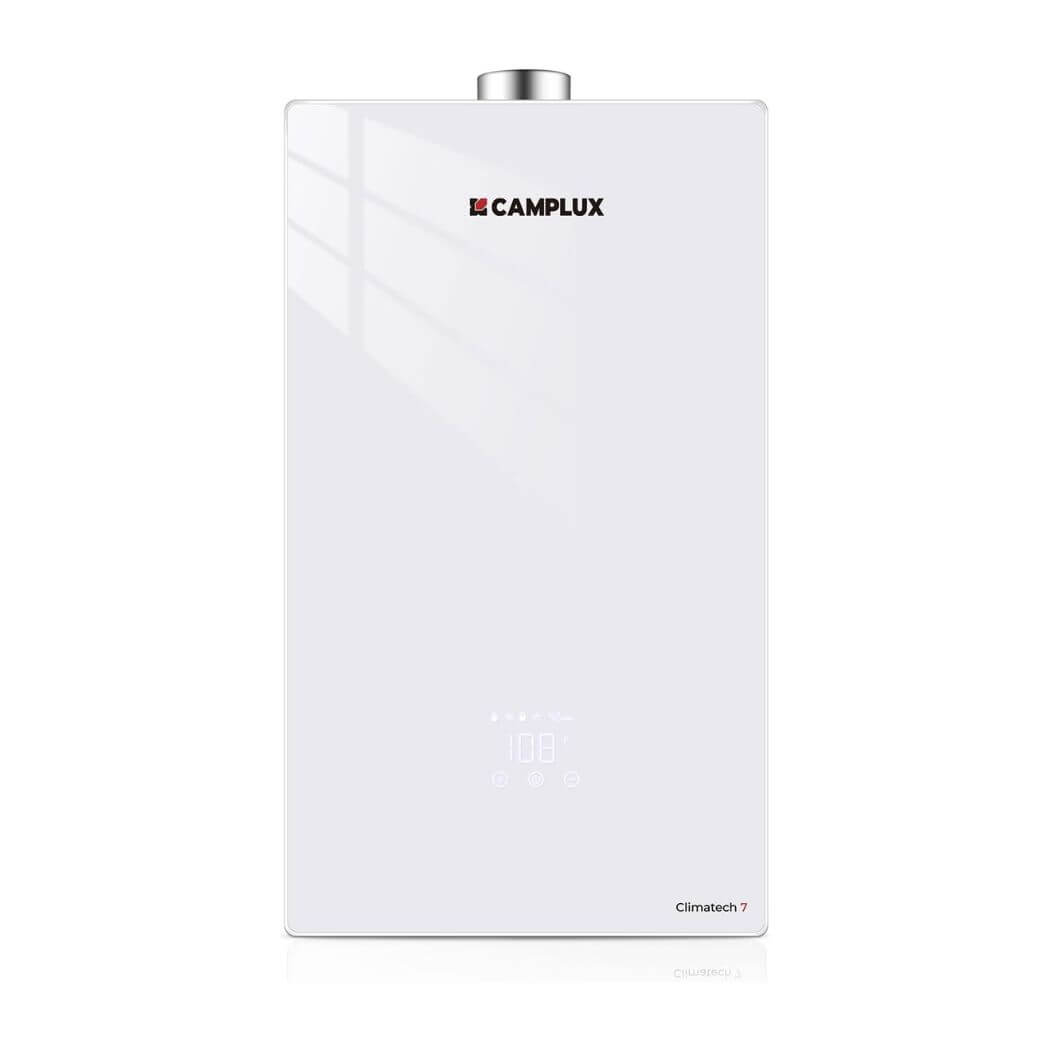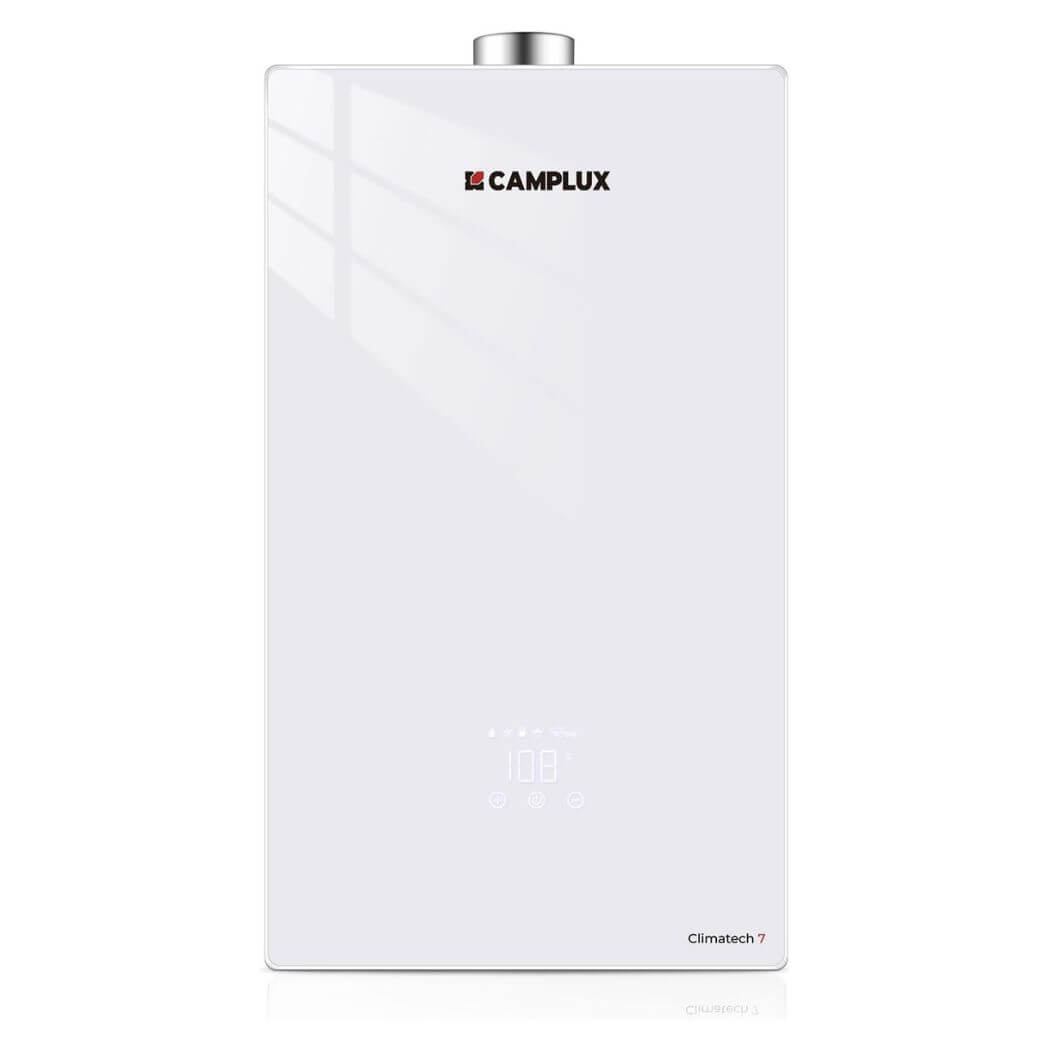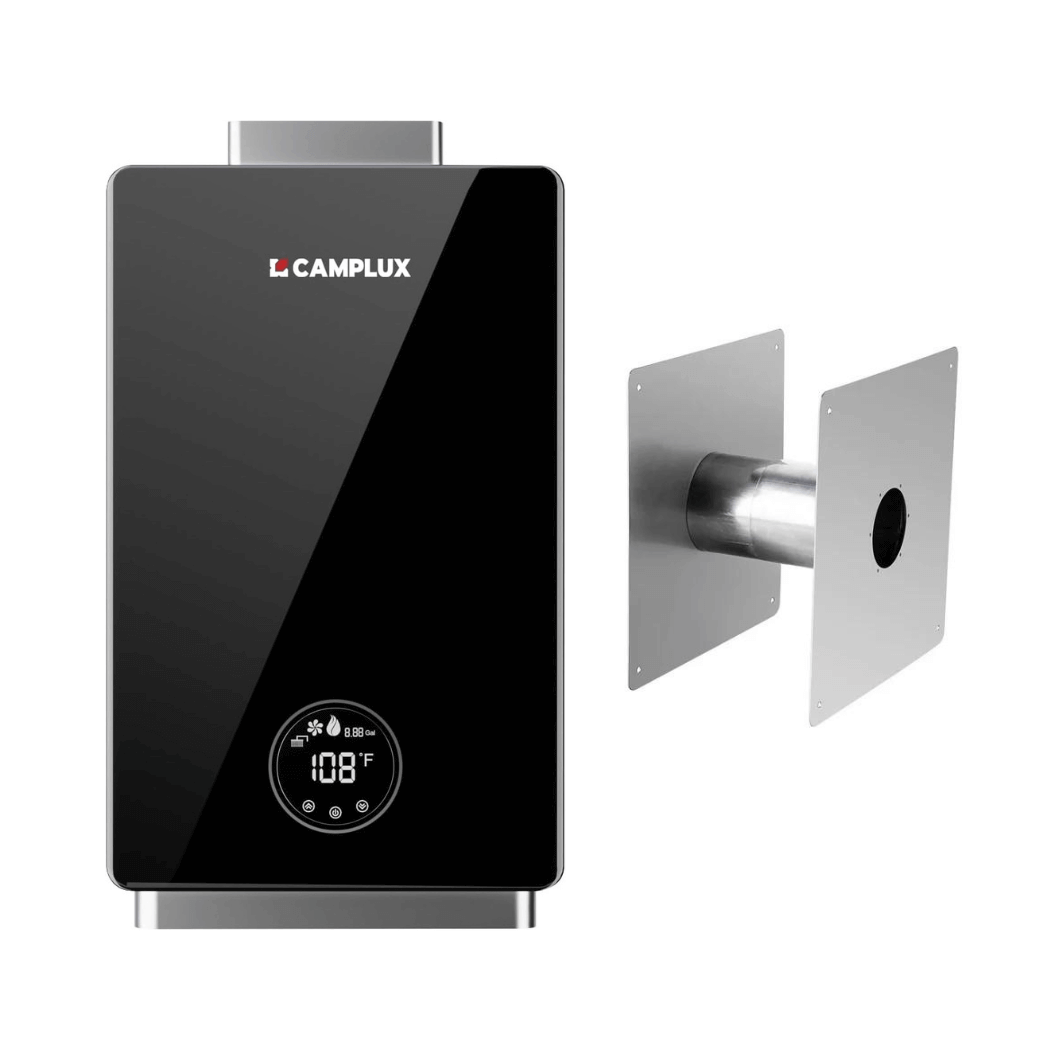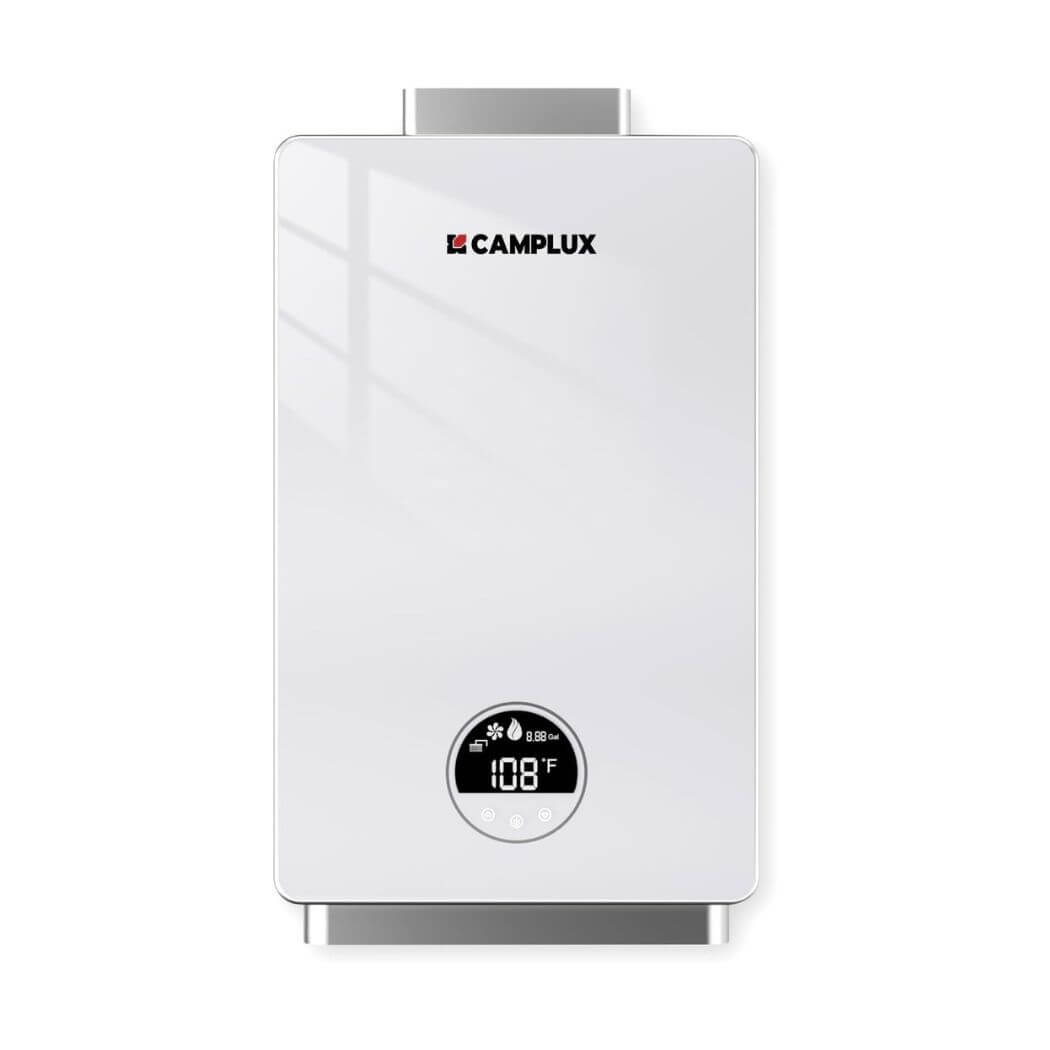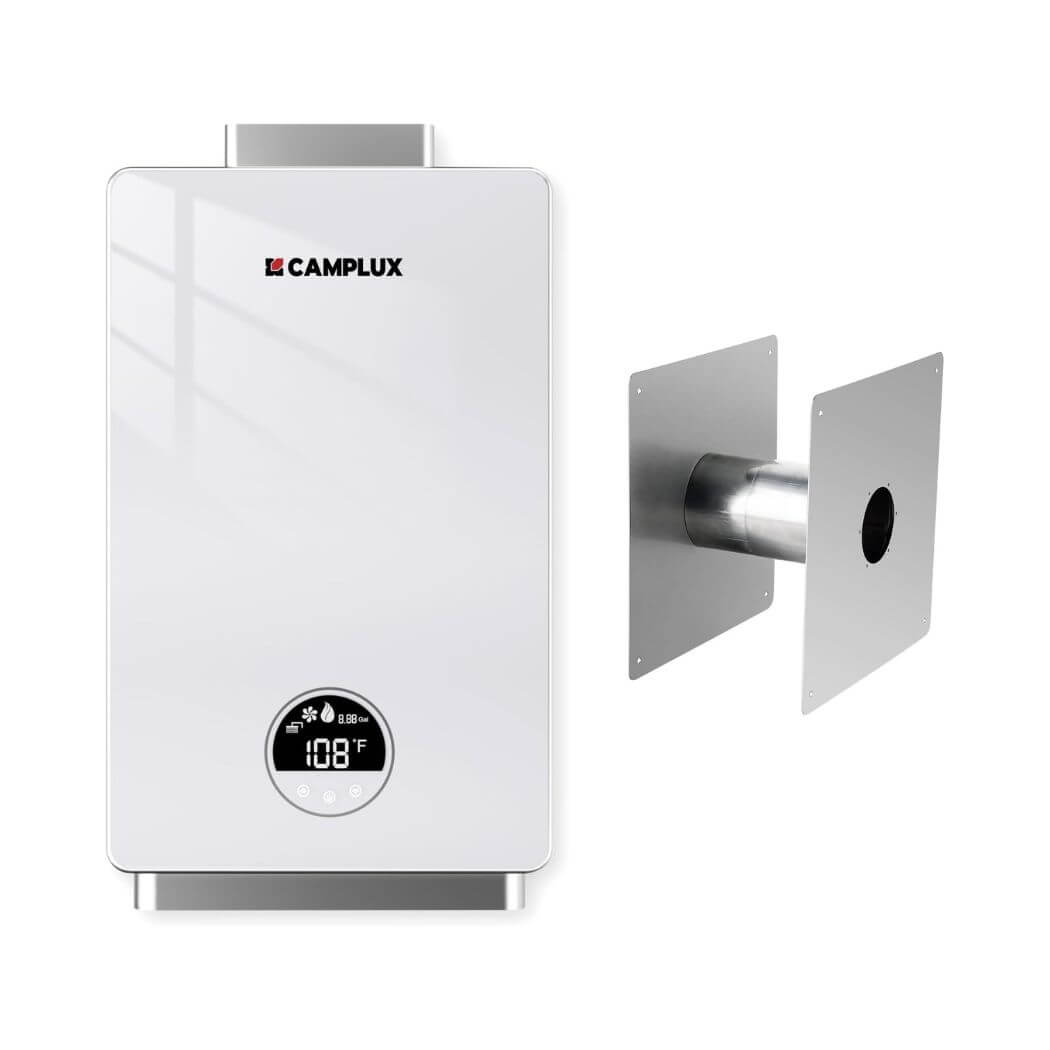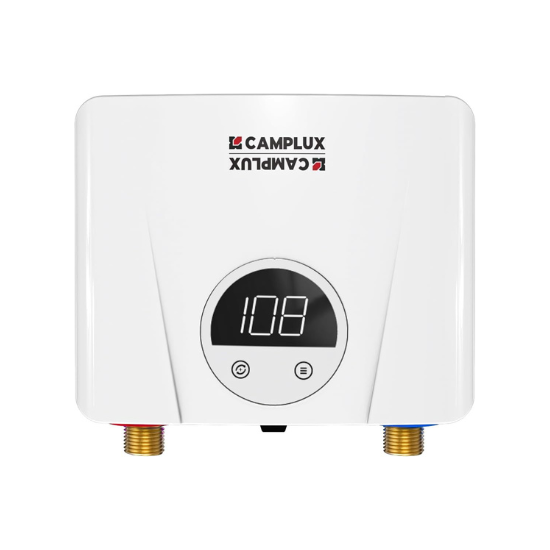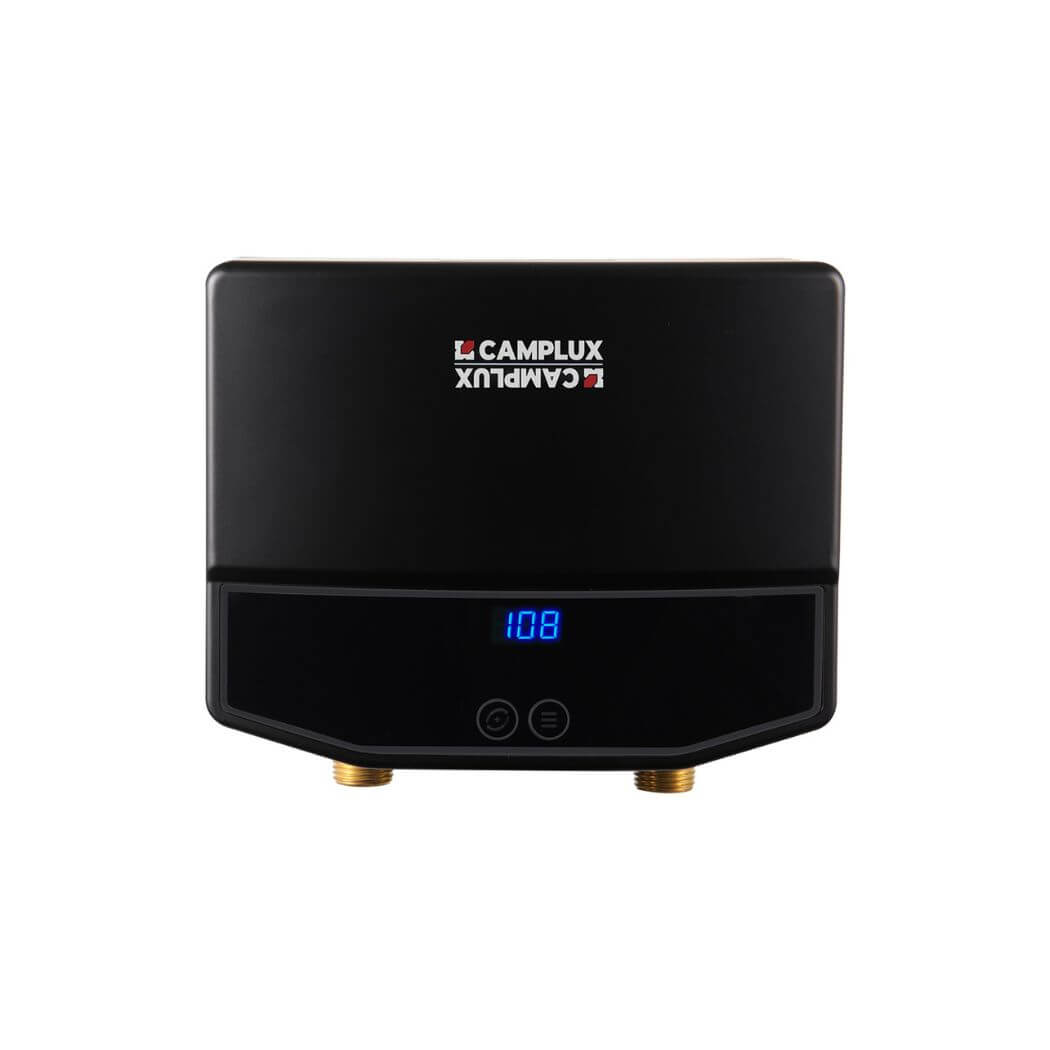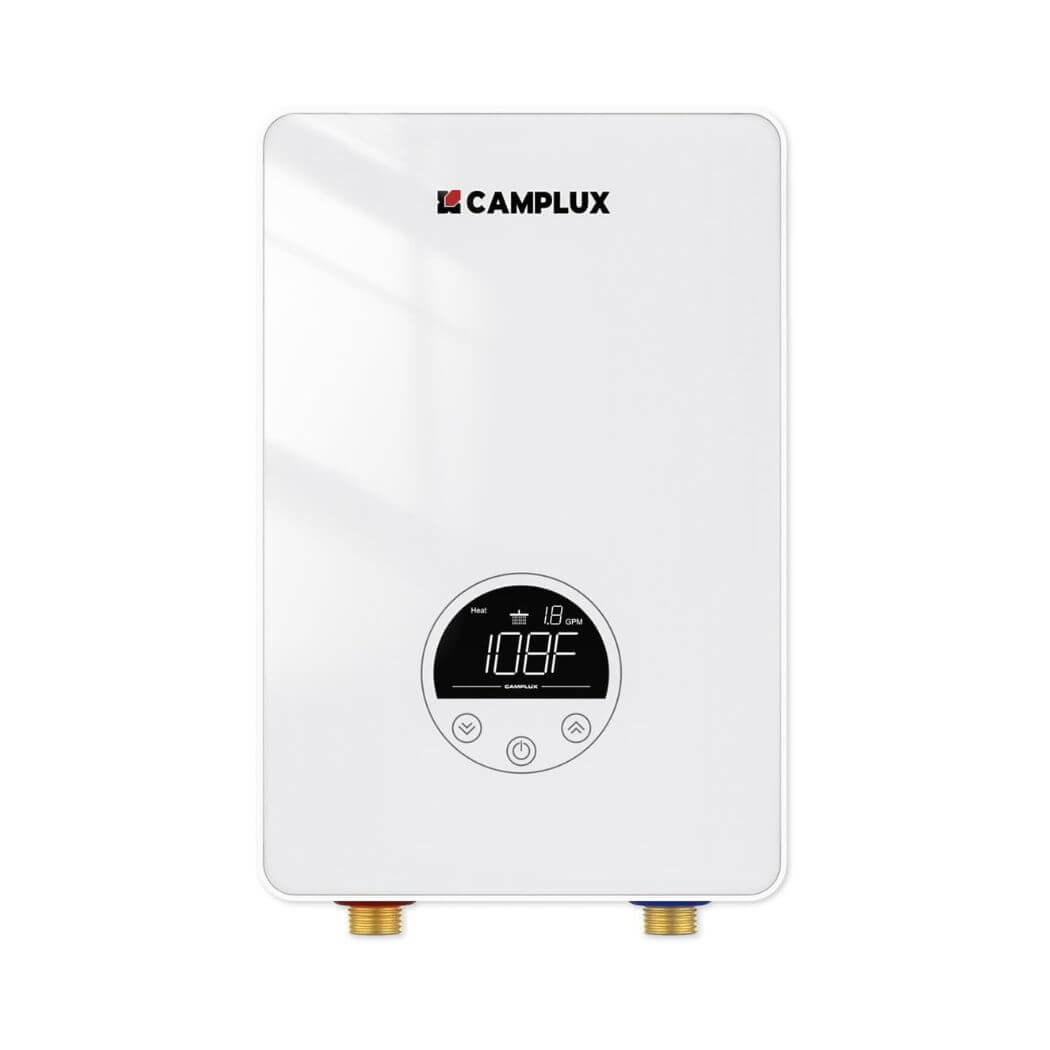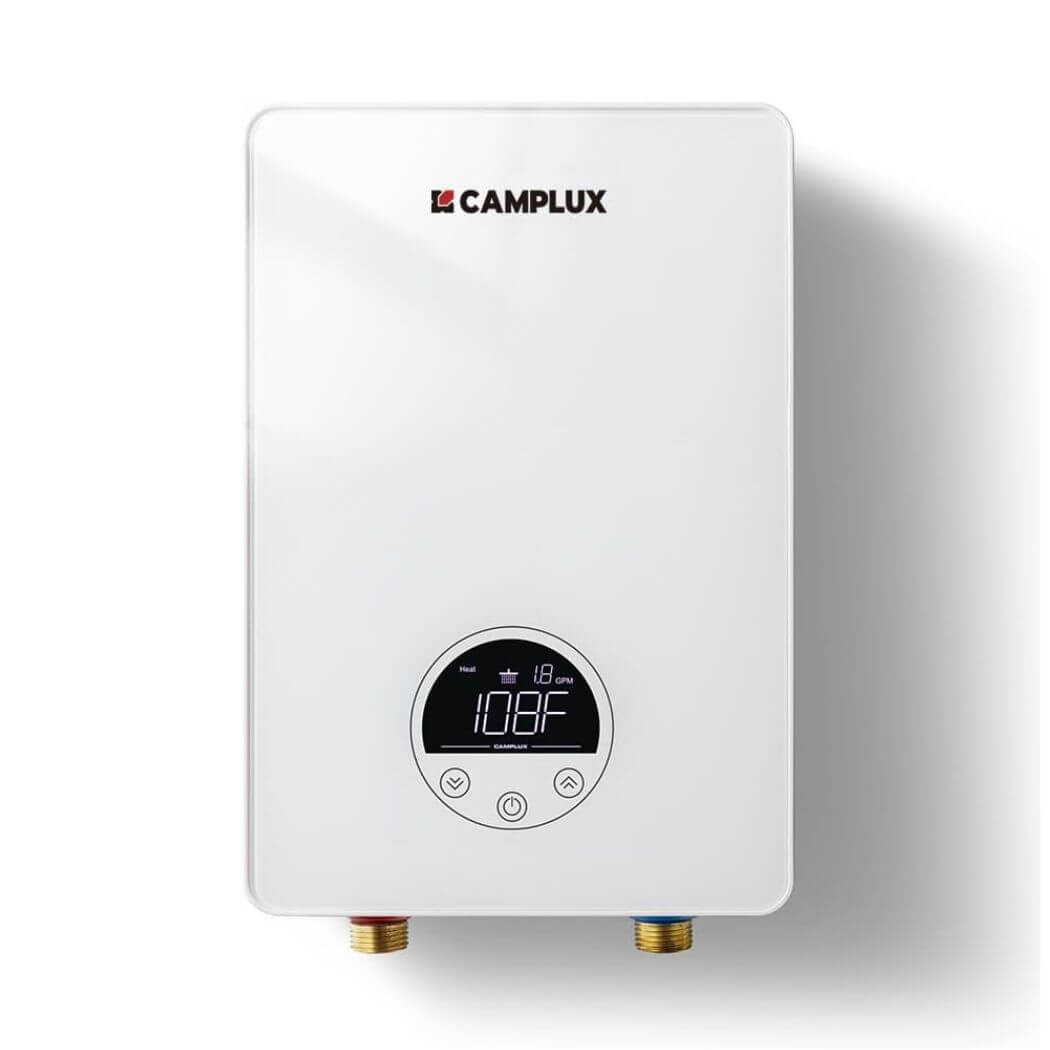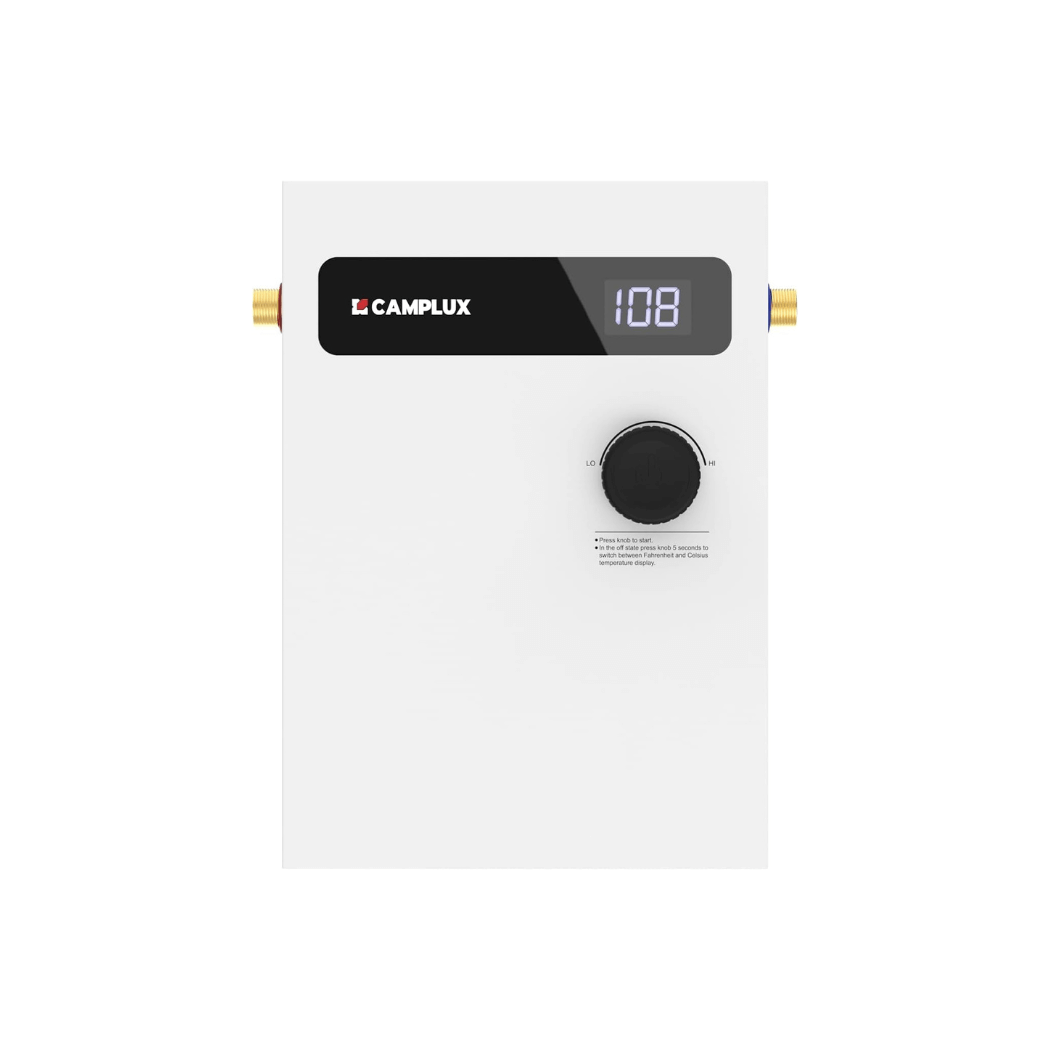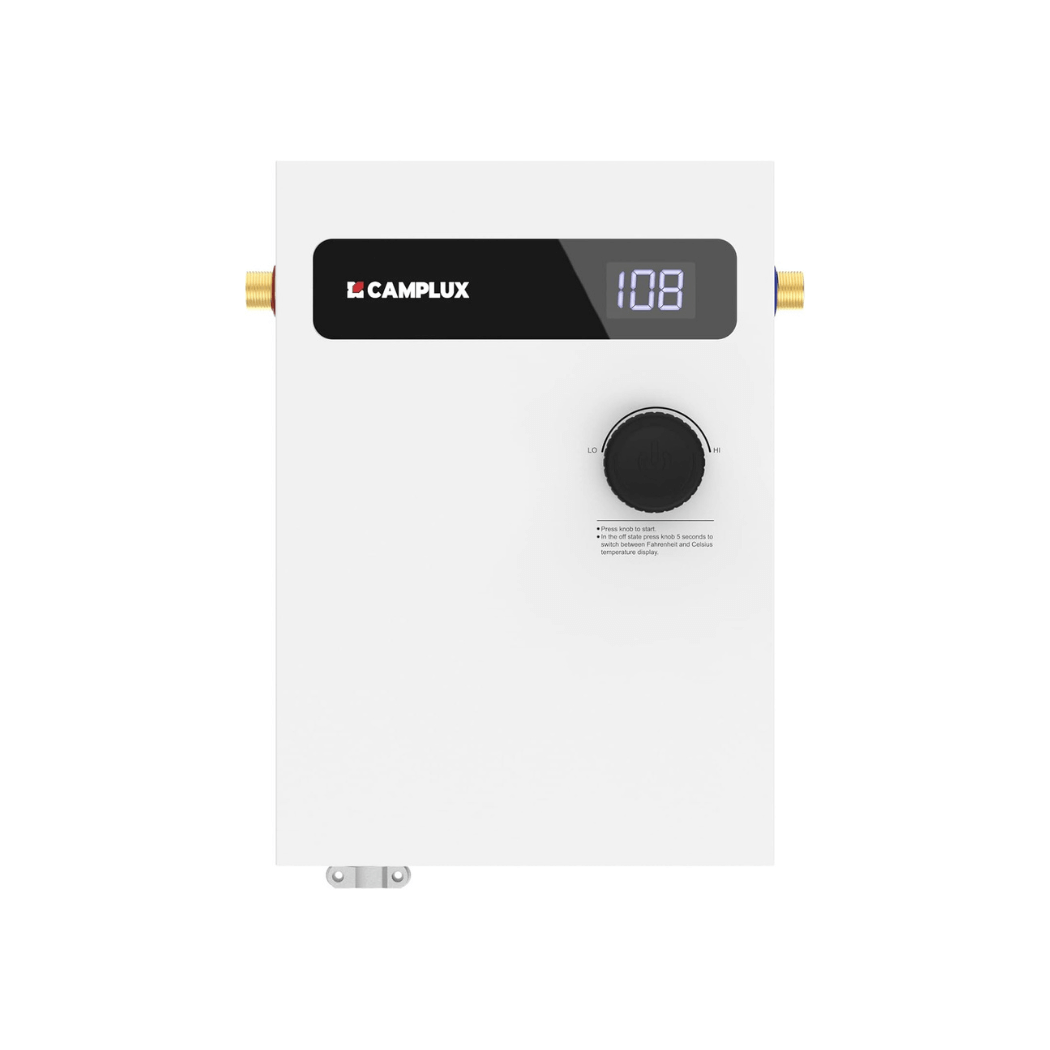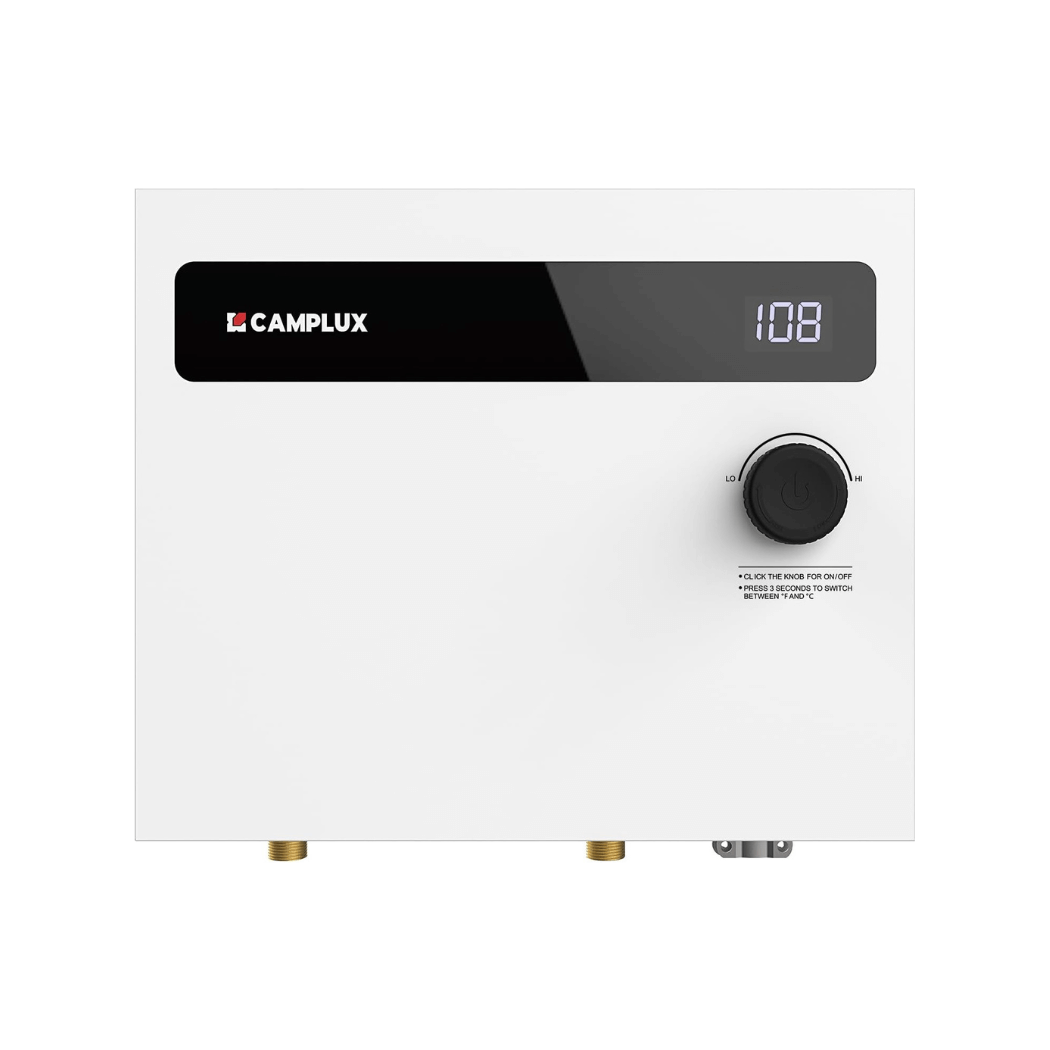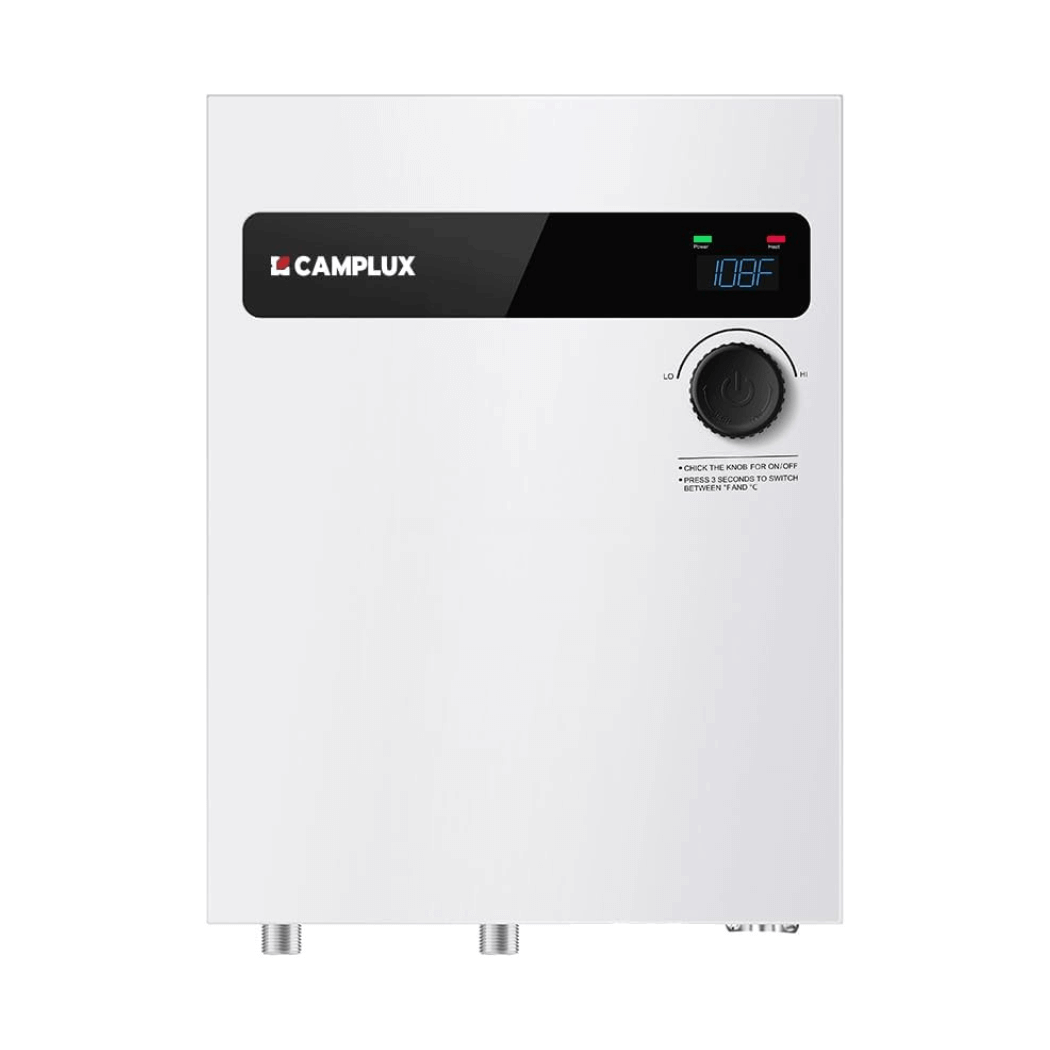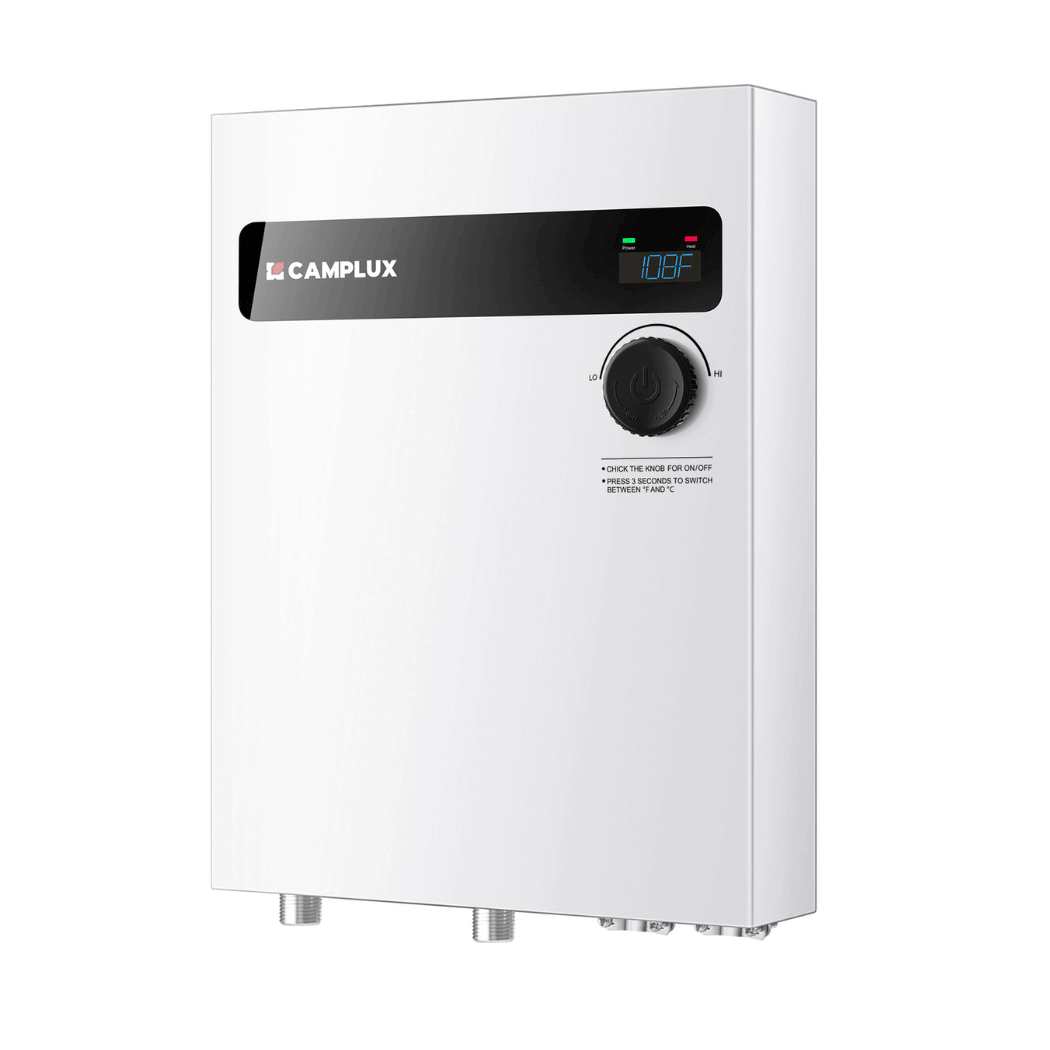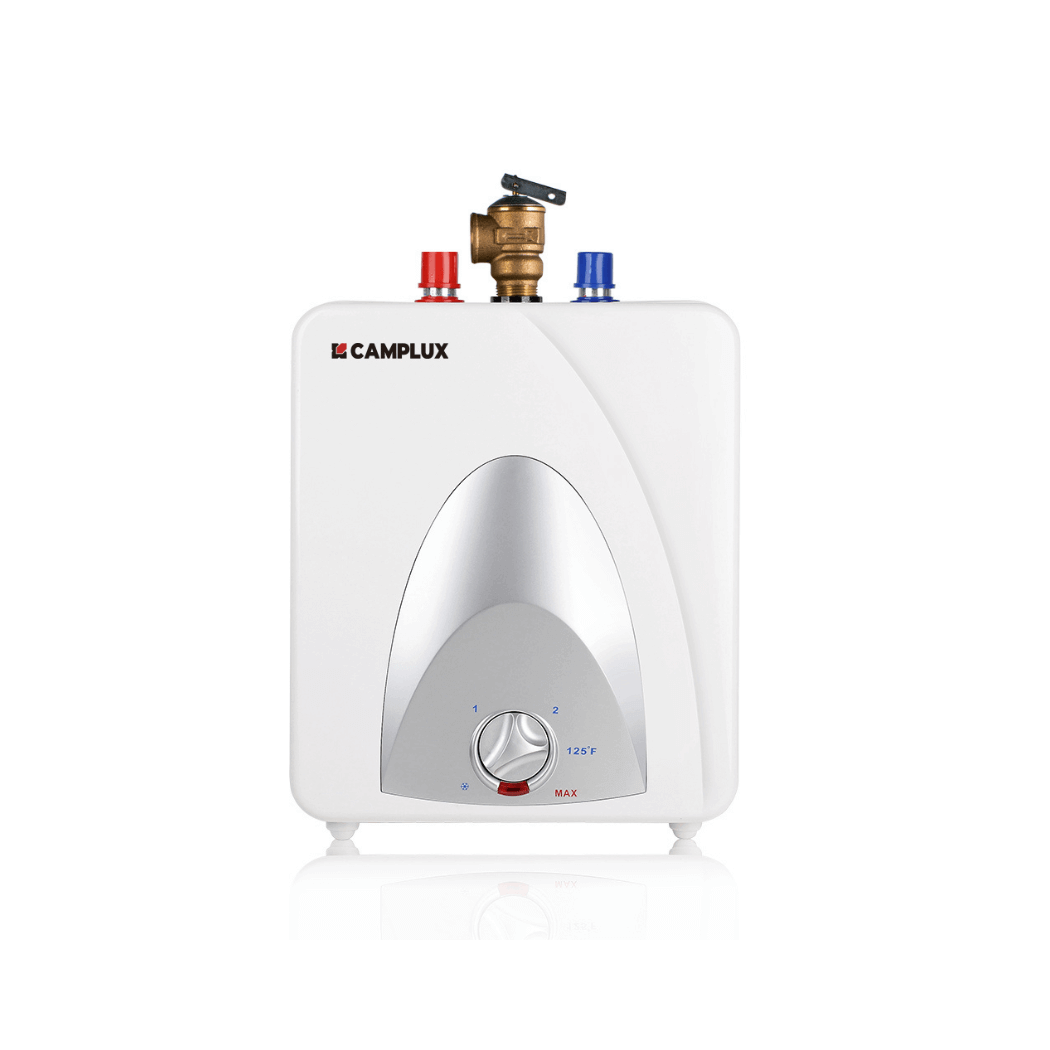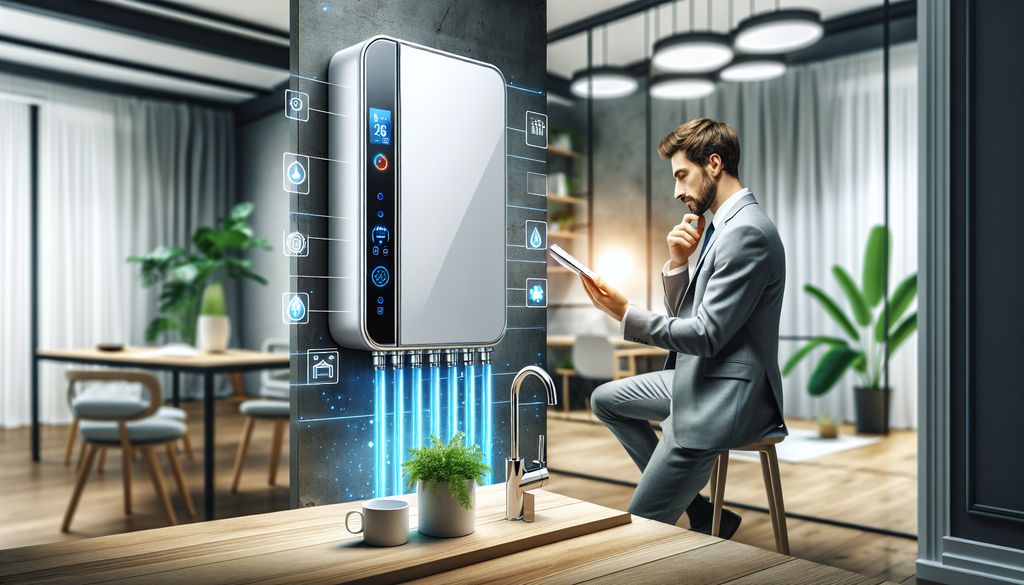Installing an indoor tankless gas water heater can provide efficient and reliable hot water while saving space. However, proper installation is crucial for optimal performance and safety. This article provides essential tips for installing and maintaining an indoor tankless gas water heater.
Key Takeaways
- Choose a well-ventilated location for the water heater to ensure proper air circulation and safety.
- Ensure the installation site has easy access to the gas supply for seamless connection and operation.
- Clear the installation area of any obstructions to allow for safe and convenient installation of the water heater.
- Regularly clean and descale the water heater to maintain its efficiency and prevent potential issues.
- Monitor water pressure and temperature to ensure the water heater is functioning properly and safely.
Choosing the Right Location
Consider Ventilation Requirements
Indoor tankless gas water heaters require adequate ventilation to ensure safe and efficient operation. Proper ventilation helps to dissipate combustion byproducts and prevent the risk of carbon monoxide buildup. It's essential to install the water heater in an area with sufficient airflow to support combustion and exhaust the flue gases effectively. Additionally, consider the proximity of the ventilation system to the unit to minimize the potential for air recirculation or obstruction.
- Ensure the ventilation system meets the manufacturer's specifications for airflow and clearance distances.
- Regularly inspect and clean the vents to prevent blockages and maintain optimal airflow.
Tip: Never obstruct or block the vents of the water heater, as this can lead to unsafe conditions and reduced performance.
Evaluate Proximity to Gas Supply
When evaluating the proximity to the gas supply , ensure that the distance meets the manufacturer's recommendations for safety and efficiency.
Consider the potential for future gas line extensions and the impact on the water heater's performance.
It's crucial to verify the gas pressure at the installation site to guarantee optimal functioning of the water heater.
Additionally, assess the availability of a nearby shut-off valve for the gas supply, enabling quick and safe maintenance procedures.
Remember to consult a professional if there are any concerns about the gas supply and its impact on the water heater's operation.
Assess Space for Installation
When assessing the space for installation, it's crucial to consider the clearance requirements for the tankless gas water heater. Ensure that there is ample space around the unit to allow for proper ventilation and maintenance access. Additionally, take into account the proximity to the gas supply to minimize the length of gas piping, which can reduce installation costs and potential gas leaks. Finally, evaluate the available space to ensure that the water heater can be installed in a location that meets all manufacturer's specifications for clearances and accessibility. Consider the following table to understand the clearance requirements:
| Clearance Type | Minimum Distance |
|---|---|
| Combustible Surfaces | 1 inch |
| Non-Combustible Surfaces | 0 inches |
Remember to refer to the installation manual for specific clearance requirements and guidelines. It's essential to adhere to these specifications to ensure the safe and efficient operation of the tankless gas water heater. Always prioritize safety and compliance with installation standards.
Preparing the Installation Site
Check for Proper Grounding
Proper grounding is crucial for the safe and effective operation of the tankless gas water heater. It ensures that electrical currents are safely directed to the ground, reducing the risk of electrical shock or damage to the unit. Additionally, adequate grounding helps protect against power surges and ensures the longevity of the water heater's electrical components. It's important to verify that the grounding meets local electrical codes and standards to guarantee the safety and performance of the unit. Consider consulting a qualified electrician for professional assessment and installation of the grounding system.
Clear the Installation Area
Before proceeding with the installation, it's crucial to ensure that the installation area is properly prepared. This includes clearing the area of any obstructions and ensuring that the grounding is in place and adequate. Additionally, it's important to inspect the water and gas connections to ensure they are in good condition and ready for the installation process.
- Clear the installation area of any debris or obstacles to provide a safe and accessible space for the water heater.
- Check for proper grounding to ensure the safety and proper functioning of the water heater.
- Inspect water and gas connections to identify any potential issues that may affect the installation process.
Tip: Prior to installation, double-check the grounding and connections to avoid any complications during the installation process.
Inspect Water and Gas Connections
After inspecting the water and gas connections, it's crucial to ensure that the installation area is properly prepared for the tankless gas water heater. This includes checking for proper grounding to ensure electrical safety and clearing the installation area of any obstructions. Additionally, it's important to inspect the water and gas connections to ensure they meet the necessary requirements for the installation.
For a more structured approach, consider implementing a Markdown table to present quantitative data related to the water and gas connections. This can help in organizing and highlighting key specifications and measurements for the connections.
It's essential to prioritize safety and compliance with installation standards when preparing the site for the tankless gas water heater.
Installing the Water Heater
Mounting the Unit Securely
Mounting the unit securely is a crucial step in the installation process. It ensures the stability and safety of the water heater.
- Use appropriate mounting hardware to secure the unit in place.
- Ensure the unit is level and properly aligned during the mounting process.
- Double-check the anchoring to prevent any movement or instability.
Proper mounting is essential for the long-term performance and durability of the water heater.
Connecting Water and Gas Lines
When connecting water and gas lines , it's crucial to ensure proper fittings and secure connections. Use thread seal tape for gas line connections to prevent leaks and ensure a tight seal. For water lines, consider using a flexible stainless steel connector to accommodate any movement and reduce stress on the water heater. Always follow the manufacturer's guidelines for the correct sizing and type of connections. Additionally, perform a thorough visual inspection of the connections to check for any signs of leaks or damage.
- Ensure proper fittings and secure connections
- Use thread seal tape for gas line connections
- Consider using a flexible stainless steel connector for water lines
- Perform a thorough visual inspection of the connections
Tip: Regularly check the connections for any signs of wear or deterioration to prevent potential leaks and ensure safe operation of the water heater.
Testing for Leaks and Proper Functioning
Regular maintenance is crucial for ensuring the longevity and efficiency of your indoor tankless gas water heater. This includes cleaning and descaling the unit on a regular basis to prevent mineral buildup and maintain optimal performance.
Additionally, it's important to regularly check for gas leaks to ensure the safety of your home and family. Use a gas leak detector to perform routine checks and promptly address any issues that arise.
Monitoring the water pressure and temperature is also essential. Keep an eye on the pressure gauge and adjust as needed to maintain a consistent flow of hot water. Similarly, monitor the temperature settings to ensure they align with your household's needs and safety standards.
Remember, proactive maintenance and safety checks can prevent costly repairs and ensure the reliable operation of your tankless gas water heater.
Maintenance and Safety Tips
Regular Cleaning and Descaling
Regular cleaning and descaling are essential for maintaining the efficiency and longevity of your indoor tankless gas water heater. Neglecting this maintenance can lead to reduced performance and potential damage to the unit. It's important to follow the manufacturer's guidelines for cleaning frequency and descaling methods.
To ensure proper maintenance, consider implementing a schedule for cleaning and descaling based on usage and water hardness. Use a mixture of vinegar and water for descaling, following the manufacturer's recommendations for the correct ratio and procedure.
Table:
| Maintenance Task | Frequency |
|---|---|
| Cleaning | Every 6 months |
| Descaling | Annually |
Blockquote:
Regular cleaning and descaling are crucial for the efficient and safe operation of your water heater. Neglecting these tasks can result in decreased performance and potential damage to the unit.
Remember to regularly check for gas leaks and monitor water pressure and temperature to ensure the safety and proper functioning of your indoor tankless gas water heater.
Checking for Gas Leaks
When checking for gas leaks , it's crucial to use a gas leak detector to ensure accurate detection. Begin by carefully inspecting all gas connections and fittings for any signs of leakage, such as hissing sounds or the smell of gas. Additionally, perform a bubble test by applying a soapy water solution to the connections and observing for bubbles, which indicate a leak. If any leaks are detected, immediately shut off the gas supply and seek professional assistance for repairs.
- Use a gas leak detector for accurate detection
- Inspect all gas connections and fittings
- Perform a bubble test with soapy water solution
It's essential to address any gas leaks promptly to prevent potential hazards and ensure the safety of the installation and occupants.
Monitoring Water Pressure and Temperature
Regular maintenance is crucial for ensuring the longevity and efficiency of your indoor tankless gas water heater. Monitoring water pressure and temperature is an essential part of this maintenance routine. It allows you to detect any irregularities or potential issues early on, preventing costly repairs and ensuring safe operation.
To effectively monitor water pressure and temperature, consider installing a pressure gauge and a temperature sensor near the water heater. These devices provide real-time data, allowing you to quickly identify any fluctuations or anomalies in the system.
Additionally, it's important to establish a regular schedule for checking and recording the water pressure and temperature readings. This proactive approach enables you to identify trends and address any deviations promptly, maintaining optimal performance and safety.
Incorporating these monitoring practices into your routine maintenance regimen enhances the overall reliability and safety of your indoor tankless gas water heater. Remember, proactive monitoring and timely adjustments can significantly extend the lifespan of your unit and provide peace of mind for you and your family.
Conclusion
In conclusion, the successful installation and maintenance of indoor tankless gas water heaters require careful consideration of location , thorough preparation of the installation site, precise installation steps, and diligent adherence to safety and maintenance practices. By choosing the right location, preparing the installation site, following proper installation procedures, and implementing regular maintenance and safety checks, homeowners can ensure the efficient and safe operation of their tankless gas water heaters. Prioritizing safety and staying vigilant in monitoring the system are essential for long-term performance and peace of mind.
Frequently Asked Questions
What are the ventilation requirements for indoor tankless gas water heaters?
Indoor tankless gas water heaters require proper ventilation to ensure safe operation. It is recommended to install them in a well-ventilated area to prevent the accumulation of gas and ensure proper combustion.
How do I evaluate the proximity to the gas supply for installation?
When installing an indoor tankless gas water heater, it is important to assess the proximity to the gas supply. Ensure that the gas lines are easily accessible and can reach the location of the water heater without any obstructions.
What space requirements should be considered for installation?
Before installing an indoor tankless gas water heater, it is essential to assess the space for installation. Ensure that there is sufficient space for mounting the unit securely and for easy access during maintenance and servicing.
What is the importance of proper grounding for the installation site?
Proper grounding is crucial for the safe operation of an indoor tankless gas water heater. It helps prevent electrical hazards and ensures that the unit is properly grounded to protect against electrical faults.
How often should indoor tankless gas water heaters be cleaned and descaled?
Regular cleaning and descaling of indoor tankless gas water heaters are recommended to maintain optimal performance. It is advised to follow the manufacturer's guidelines for cleaning frequency based on usage and water hardness.
What should I do if I suspect a gas leak from the water heater?
If you suspect a gas leak from the indoor tankless gas water heater, it is important to take immediate action. Turn off the gas supply, ventilate the area, and contact a qualified professional to inspect and address the issue.
